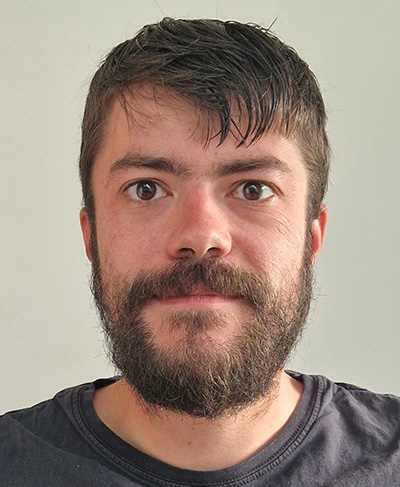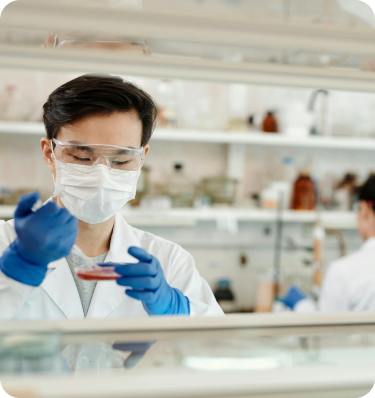The PKD Foundation is interested in fostering research in the areas relevant to PKD with the goal of furthering our understanding of the physiological, biochemical, molecular and genetic mechanisms of this disease. This fellowship is designed to facilitate young investigators to obtain significant research experience as they initiate careers in PKD research. This program is intended to assure the continuity over time of outstanding investigators committed to the study of PKD.
Sarah Miller, Ph.D.
University of Oklahoma, Health Sciences Center

-
Project Summary
The Role of Trem2+ Cyst Associated Macrophages in Polycystic Kidney Disease
Polycystic kidney disease (PKD) affects over half a million people in the United States and is one of the most common genetic kidney diseases. The disease is characterized by gradual development of kidney cysts throughout a patient’s lifetime, which eventually leads to end-stage kidney disease requiring renal replacement therapy or transplant. The slow progressing nature of autosomal dominant PKD (ADPKD) means there are opportunities for pharmacological or behavioral interventions aimed at slowing disease progression. Data from multiple studies indicate that a type of immune cell in the kidney, called macrophages, promote cyst progression in animal models of the disease. However, the majority of data that supports these findings was collected using rapidly progressing congenic (i.e. born with the disease) or injury accelerated (i.e. mice are given a renal injury to make cysts grow faster) models of disease. This equates to studying the role of macrophages during 0-10 (congenic) or 16-24 years of age (injury accelerated) in humans. This does not accurately reflect the timing (age of cyst onset) or rate of disease progression (slow) in humans, where cysts begin to enlarge in the 2nd decade of life and gradually progress until end stage renal disease is reached in the 5th-9th decade. In preliminary studies, I analyzed the gene expression profiles of kidneys from both slowly and rapidly progressing models of cystic disease as well as non-cystic controls. My data identified a major difference in the macrophage profile between slow and rapid cystic models and non-cystic controls. This included a population of cyst associated macrophages (CAM) that were only present in the slowly progressing model that expressed the gene Trem2. Based on data showing a protective role for Trem2+ macrophages in other slowly progressing diseases, I hypothesize that Trem2+ CAMs restrict cyst growth. In this project I will use a slowly progressing mouse model (Pkd1RC/RC) that develops cystic disease at an age and rate similar to patients to determine the role of Trem2+ CAMs in a clinically relevant animal model. I will also test whether Trem2+ CAM macrophages are present in kidneys isolated from end stage ADPKD patients. Thus, these studies will challenge the central paradigm that all kidney macrophages promote PKD progression, and instead pursue the concept that there are beneficial subpopulations of macrophages that can help restrict cyst growth. The idea of enhancing protective macrophages which may directly inhibit cyst growth has the potential to be of significant translational value to the field as antibodies that enhance Trem2+ CAM activity are currently in clinical trials for patients with Alzheimer’s disease and may be rapidly repurposed for patients with ADPKD.
-
Biography
I am postdoctoral researcher working under the mentorship of Dr. Kurt Zimmerman in the Department of Internal Medicine, Division of Nephrology at the University of Oklahoma Health Sciences Center (OUHSC). During my graduate training in the lab of Dr. Jimmy Ballard, my work was primarily focused on the large clostridial toxin TcdB, produced by the bacteria Clostridioides difficile. During my studies, I found a 19-amino acid region in the toxin that, when deleted, prevented membrane translocation while leaving the toxin enzymatically active. This toxin mutant was used as a vaccine candidate in later studies and was found to elicit an immune response that was protective against disease in an animal model. This patented technology is currently being investigated for use in patients. As a result of my graduate studies, I have a strong background in microbiology, protein biology, and immunology.
As a postdoctoral researcher, my studies have focused on the intercellular crosstalk between the cystic epithelium and kidney resident macrophages. Using single cell RNA sequencing, I identified two possible clusters of cystic epithelium that shared expression of several genes, including Spp1. My spatial transcriptomics and RNA scope data confirm that Spp1 expression is strongly enriched in cystic epithelium. Further, loss of Spp1 worsened cystic disease suggesting that Spp1 restricts cyst progression, possibly through influencing macrophage accumulation and activation. The results of these studies are currently being assembled into a manuscript. My current project is focused on understanding how macrophages influence the progression of cystic kidney disease. In particular, I found that a specific subset of macrophages, termed Trem2+ cyst associated macrophages (CAM), was significantly enriched in mice with cystic kidney disease compared to non-cystic littermate controls. To test the functional importance of these cells, I have crossed cystic mice to mice lacking Trem2. Preliminary data from these studies indicate that loss of Trem2 worsens cystic kidney disease, suggesting that Trem2+ CAM may restrict cyst progression. In these studies, I will challenge the paradigm that all kidney macrophages promote cyst progression, and instead, pursue the concept that there are beneficial populations of macrophages that can restrict cyst growth.
Thomas Naert, Ph.D.
Ghent University

-
Project Summary
Morphological and molecular insights into vascular complications of ADPKD
A common non-renal manifestation of autosomal dominant polycystic kidney disease (ADPKD) is the development of aneurysms, abnormal outpouchings in the walls of a blood vessels. Unfortunately, aneurysms can rupture leading to life-threatening internal bleeding. Especially when located in the brain vasculature (intracranial aneurysms), rupture is a catastrophic event with a high mortality rate or leading to permanent neurological impairment. These severe vascular outcomes of ADPKD also cluster in certain families. While better quality of care for the renal manifestations of ADPKD carefully becomes available to patients, it is becoming apparent that the cardiovascular complications are still poorly characterized and there is no consensus yet on the clinical management.
Meanwhile, it is becoming accepted that these vascular complications are not simply secondary to kidney pathology. Indeed, alterations in polycystin-1 or -2 expression (PC-1 or 2, protein products of PKD1 or PKD2) directly affect non-renal cell types.
Recently, I used the aquatic model organism Xenopus tropicalis to establish novel animal models for ADPKD, by using CRISPR/Cas9 to target and inactivate either the pkd1 or the pkd2 gene. I can inject this CRISPR/Cas9 molecular scissors into freshly fertilized frog embryos and watch them develop renal cystogenesis in real-time within a time-span of two days (Naert et al, Development 2021, public news release – https://www.eurekalert.org/news-releases/933875).
While our model is also well-positioned to elucidate further insights into the renal manifestations of ADPKD, I here propose to use our unique externally developing animal model to investigate the cardiovascular complications of ADPKD. I will use so-called clearing technologies, which render biological tissues “see-through” and then employ advanced microscopy (light-sheet microscopy) to gather three-dimensional recordings of the entire vasculature in our intact frog tadpoles. Next, I will use state-of-the-art artificial intelligence (deep learning) image processing to automatically process these very large datasets and score for vascular pathology. As such, I intend to use our xenopus ADPKD models to scrutinize the entire cardiovascular structures of Xenopus embryos and investigate morphologically the presence, location and characteristics of intra- and extracranial aneurysms. After locating these, I will use single cell multi-omics (a method to understand how cells are wired) to investigate the abnormal cell signalling leading to vascular disease (finding out which wires are in the wrong position).
I believe that gaining deeper insights into the morphology as well as the signaling programs of cells composing ADPKD-associated aneurysms will yield novel insights, which could then be used to derive novel treatment strategies.
-
Biography
Thomas Naert, Ph.D is currently a junior postdoctoral research fellow in the laboratory of Dr. Soeren Lienkamp, in the Department of Anatomy at Zurich University. Dr. Naert will soon move as senior postdoctoral fellow in the laboratory of Dr. Kris Vleminckx, in the Department of Biomedical Molecular Biology at Ghent University. Dr. Naert has a longstanding research interest in modeling rare genetic diseases and elucidating their molecular mechanisms using the amphibian model organism Xenopus. His work has provided novel insights in both the molecular drivers of rare cancers (desmoid tumors, glioblastoma, …) as well as rare genetic diseases (ADPKD, renal agenesis, …). Dr. Naert has recently established Xenopus animal models for ADPKD, which are amenable for higher-throughput investigation via employing artificial intelligence and computer vision approaches. These new tools will be used to investigate the cardiovascular manifestations of ADPKD, with an emphasis on intracranial cerebral aneurysms.
Duuamene Nyimanu, Ph.D.
University of Kansas Medical Center

-
Project Summary
The Role of the Apelin system in polycystic kidney disease (ADPKD)
Autosomal dominant polycystic kidney disease (ADPKD) is one of the most common and potentially life-threatening diseases. A key feature of ADPKD is the presence of numerous fluid-filled cysts in the kidneys. The size of the cysts increases with time, making the kidneys extremely large and causing them not to function properly. Large kidneys can be very painful and impact the quality of life. ADPKD affects both children and adults, and over 50% of people with the disease develop kidney failure by age 50. Dialysis is the only option for these individuals while waiting for a kidney transplant. Heart disease is one of the most common causes of death in people with ADPKD. Despite FDA approval of tolvaptan, there is still an unmet need for more effective drugs for treating ADPKD due to the unfavorable side effects of tolvaptan. The apelin pathway has emerged as a new drug target that could help individuals with ADPKD. Activation of the apelin pathway improves heart and kidney function and lowers blood pressure in animal models. This study proposes that activating the apelin pathway in PKD will slow cyst growth and improve kidney function. Apelin signaling may also reduce the development of high blood pressure in ADPKD patients. To test these hypotheses, we will activate the apelin pathway in animal models of PKD and determine if this approach slows cyst development and reduces disease progression. We will also determine whether it prevents the activation of pathways responsible for high blood pressure in ADPKD. We will measure apelin levels in the blood of people with ADPKD and normal volunteers to determine if apelin levels can be used to predict disease progression. Apelin has already been tested in humans and found to be safe. Therefore, this study could lead to the discovery of a new treatment approach that could improve the quality of life of people with ADPKD.
-
Biography
Dr Nyimanu received his Ph.D. in Cardiovascular Pharmacology at the University of Cambridge, England. His doctoral thesis research focused on the role of the apelin pathway in the cardiorenal system. He holds a bachelor’s degree in Biomedicine and a master’s degree in Molecular Medicine from the University of East Anglia, Norwich, England. He also holds a Master of Research (MRes) degree in Medical Sciences (Metabolic and Cardiovascular Disease) from the University of Cambridge, England. He moved to the Jared Grantham Kidney Institute at the University of Kansas Medical Center, Kansas City, Kansas, in 2022 to pursue postdoctoral research training under the mentorship of Dr. Alan Yu.
Zhang Li, Ph.D.
University of Alabama at Birmingham

-
Project Summary
Injury-induced tubular obstruction promotes cyst formation in ADPKD
Autosomal Dominant Polycystic Kidney Disease (ADPKD) is one of the most commonly inherited genetic renal disorders affecting more than 500,000 people in the United States and 13 million people worldwide. ADPKD is due to a genetic mutation in one of two genes, PKD1 or PKD2, that encode the proteins polycystin-1 (PC1) and polycystin-2 (PC2), respectively. Despite its strong genetic basis, the presentation and progression of ADPKD varies widely in the population. The typical course is adult-onset disease with end-stage renal disease in the 6th decade of life. However, a small proportion of patients have adequate renal function into the 9th decade, whereas others present with enlarged kidneys as teenagers. This suggests that other factors, including environment and modifier genes, also play a role in disease severity.
Recent discoveries from animal studies have found that injury to the kidney can play an important role in cyst progression. In mice the absence of functional PC1/PC2 in the kidney results in slow cyst growth in focal locations. Subsequent injury to the kidneys, however, promotes rapid and widespread cyst growth. How injury drives the rapid disease progression is a mystery.
Based on my preliminary studies, I hypothesize that tubule obstruction caused by renal injury triggers rapid cyst formation. The kidney contains millions of renal tubules that function as filtration units for the blood to eliminate waste through the urine. If this filtration is blocked, it can cause the tubules to dilate causing injury to the surrounding tubules and promoting additional tubule dilation and accelerated cyst formation.
I predict that PC1 and PC2 have an important role in the kidney to respond to injury. Under normal conditions, cells in the kidney tubules respond and repair the injury to restore full function. However, in kidneys with PKD1 or PKD2 mutations, the kidney loses the ability to fully repair. The cells that fail to correctly repair die and slough off into the tubule. The accumulation of these dead cells in the tubule lumen leads to tubule obstruction and subsequent dilation, resulting in rapid cyst progression and further injury to surrounding nephrons. This hypothesis is supported by the nature of disease progression among patients with evidence showing individual cysts form early in life but progressively increase during adult





